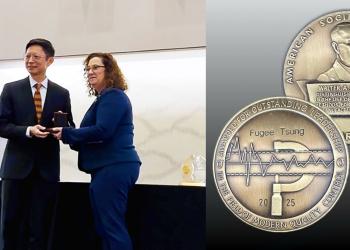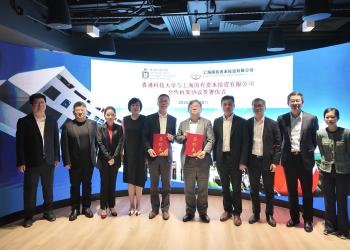HKUST's Significant Breakthrough in Superconductivity Using Ultrathin Lead Nanowires For Medical and Biological Applications
The Hong Kong University of Science and Technology (HKUST) has achieved research breakthrough with a novel approach, using ultrathin lead nanowires to produce magnetic fields which are 200 times stronger and increase the temperature of the environment in which superconductors operate. The research, providing solutions to a bottleneck unsolved for over a century concerning low applications of superconductors due to ultra low temperatures and low magnetic critical fields required, is envisaged to greatly enhance superconductor-based technologies to facilitate their applications in medical and biological fields such as high-resolution Nuclear Magnetic Resonance Imaging (MRI) devices for cancer and stroke detection. The breakthrough research is published in the prestigious nanoscience and technology journal ACS Nano..
HKUST's research, led by Prof Rolf Walter Lortz from the Department of Physics, is conducted by a cross-disciplinary team made up of Prof Ping Sheng from the Department of Physics, Prof Frank Leung-yuk Lam and Prof Xijun Hu from the Department of Chemical and Biomolecular Engineering, as well as researchers from the Department of Physics and the William Mong Institute of Nano Science and Technology. It addresses the longstanding issue of superconductors which, despite having their phenomenon known for more than 100 years, have had few applications because of the cold temperatures, low critical field, complex techniques and high costs required. High magnetic field applications are of particular interest since they are required for high resolution medical and biological imaging techniques. However, there has been little progress in the recent years to take the fields of superconducting electromagnets beyond the current limit of 21 Tesla.
HKUST's team solved the problem regarding cold temperatures and low magnetic critical fields by demonstrating that the critical field of a standard elemental superconductor can be enhanced by a factor of 200 by nanostructuring the material. They invented an innovative chemical method using the porous silica material SBA-15 and infiltrating ultrathin lead nanowires with a diameter of six nm into the pores.The nanowires form a dense network of parallel wires which are so closely spaced that the superconducting properties of lead could be preserved on the tiny nanometer scale. With lead as the material, the critical field can be enhanced from only 0.08 Tesla to more than 15 Tesla. The team has also found a preparation technique which is relatively simple, affordable and transferrable to the production of similar nanostructured materials.
One of the main applications of superconductors is MRI, a harmless non-invasive technique for obtaining high-resolution images of soft tissue materials from the interior of the human body. The MRI technique is widely used for the detection of cancer, strokes or other diseases, and helps medical doctors monitor the recovery process in the human body. With HKUST's breakthrough already enhancing the magnetic critical field superconductors, the quality of the MRI image is expected to significantly improve when the fundamental research contributes to applied research.
In order to push the upper limit of the magnetic field well beyond the magic value of 21 Tesla, HKUST's team will embark on another stage to replace lead with other superconducting materials with higher intrinsic critical fields such as Niobium (Nb) or the widely-applied high-performance superconducting alloy Niobium Tin (Nb3Sn). Furthermore, the researchers aim at exploring the possibilities for a large scale production to enhance the materials' applicability.
For media enquiries, please feel free to contact :
Mavis Wong
Tel: 2358 6306
Email: maviswong@ust.hk









